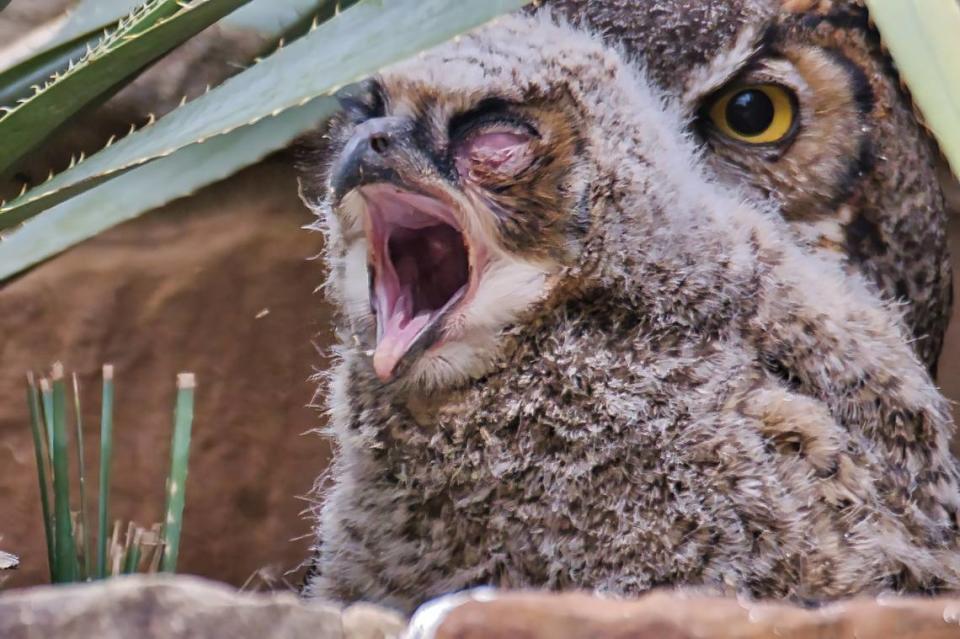WATCH: Texas wildflower center’s resident great horned owl recently laid 2 eggs
- Oops!Something went wrong.Please try again later.
Athena, the great horned owl and the most famous hoot owl in Texas, has hatched eggs at the Lady Bird Johnson Wildflower Center in Austin. And it will all be captured live on camera for the 14th year.
Athena is nesting and people can now watch via live stream. The goal of the live stream is to give people access to the intimate moments of wildlife, according to the wildflower center website.
“Lucky for us — and our guests — the female, who we call Athena, nests in a very conspicuous place, right above the entrance to our Courtyard in the sotol planter nestled in the north corner,” according to the wildflower center website. “When conditions are right and her eggs hatch into owlets, she provides a rare opportunity to view a wild great horned owl rearing her young.”

Great horned owls typically hatch their eggs from March to mid April
The great horned owls are the largest species of owls in Texas, and are commonly spotted around North Texas. Athena measures almost two feet in length.
Owls typically hatch eggs from March to mid April, and over the past decade Athena has been building her nest right above the entrance to the Wildflower Center’s Courtyard, underneath a raised planter of a sotol flower. The sotol plant provides shelter, shade, and a rare chance to see a great horned owl interacting closely with her young.
“Watching Athena raise owlets each year has provided us with an opportunity to more deeply connect with nature and is a testament to the power of creating healthy environments,” said Wildflower Center Executive Director Lee Clippard. “It has been such an amazing experience for our guests that we decided to share it with those who can’t visit in person.”
Athena has appeared each year during Wildflower season, incubating her eggs for around four weeks then caring for the owlets with the help of her mate for up to six weeks following hatching. She has successfully raised her owlets every season but one since her first appearance at the garden.
Will live camera interfere with owl’s nesting routines?
The camera uses infrared technology to capture everything from the incubation of the eggs to the fledglings’ first flight. The new live stream comes through a partnership between the Wildflower Center and the Cornell Lab of Ornithology.
Project leader for the Cornell Lab’s Bird Cams, Charles Eldmire, says Athena has been very consistent in her nesting habits over the years.
“She clearly feels safe in her chosen nest site at the Wildflower Center and has been unbothered by the high volume of visitors, so adding a camera that is tucked into the existing architecture about 20 feet away is unlikely to affect her nesting behavior,” Eldmire said.
How to visit Athena at the Lady Bird Johnson Wildflower Center
People can now visit Athena at the wildflower center. Part of The University of Texas at Austin, the center draws more than 245,000 visitors each year to its 284 acres of gardens, trails, and exhibitions. The center’s investments in science, education, and conservation include a native seed bank, one of the largest databases of native plants in North America, and a research program in partnership with the University. In 2017, the Texas legislature designated the facility as the State Botanic Garden and Arboretum. The Center embodies the environmental legacy of Lady Bird Johnson, former First Lady of the United States.
For more information about Athena, visit the Lady Bird Johnson Wildflower Center website. Viewers can access every live camera at Cornell Lab.
